Looking for a specific Sorry! rule?: | Setup | Playing the Game | Cards | Winning the Game | Partnership Game | Point Score Variant Game | FAQ | Components |
Objective of Sorry!
The objective of the game is to be the first player to get all four of your pawns home before the other players.
Setup
- Each player chooses a color and places the four pawns of the corresponding color on the matching Start space.
- Shuffle the cards and place them face down on the corresponding space on the gameboard.
- Choose a player to start the game. If you play multiple games, the winner of the previous game gets to start the next game.
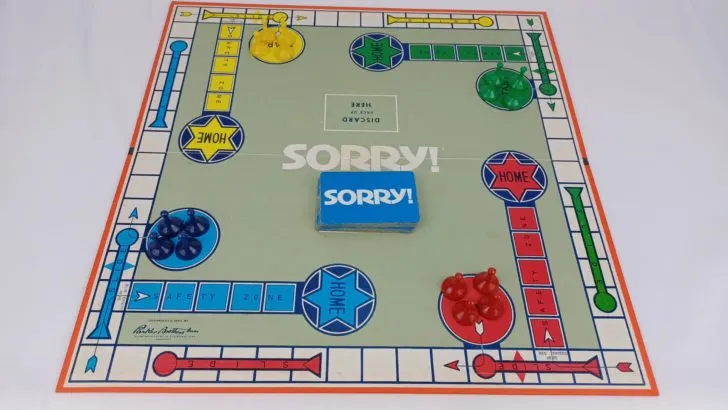
How to Play Sorry!
To start your turn you will draw the top card from the draw pile. Depending on what card you draw, you will take the corresponding action (see the Cards section below). You will place the card face up on the Discard Pile space.
Entering the Gameboard
To start the game all of your pawns will be on your Start space. To begin moving your pawns, you must move them from your Start space onto the entry space (the space directly below the Start space).
If a player reveals a one or two card, they can take one of their pawns from their Start space and move it to the entry space.
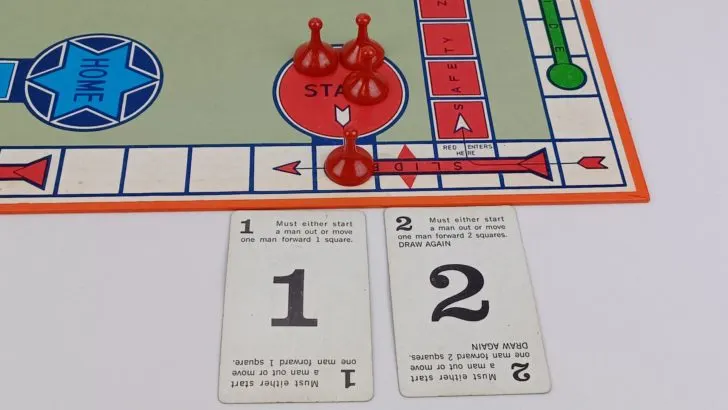
Should you draw a two card you will also get to draw an additional card and take the corresponding action.
If you already have one of your pawns on your entry space, you cannot move another of your pawns onto the gameboard until you move the other pawn off the space.
Should another player have one of their pawns on your entry space and you move a pawn onto the gameboard, you will send their pawn back to their Start space.
Movement
Depending on the card that was revealed, you may get to move one of your pawns. Normally you will move one of your pawns the number of spaces printed on the card. Outside of sevens, you must use the complete number on one of your pawns. Unless otherwise specified you will move pawns clockwise around the gameboard. You must move your pawn the exact number of spaces printed on the card.
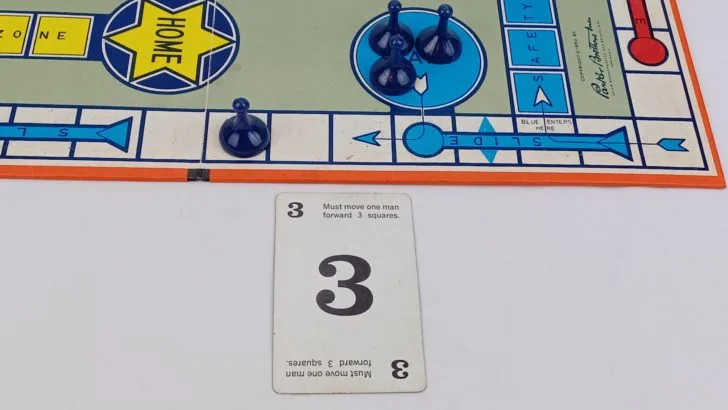
Normally you will move clockwise/forward around the board. Four and ten cards allow you to move backwards though. If you move past the entrance to the Home space moving backwards, you can continue towards the Home space without going around the entire board.
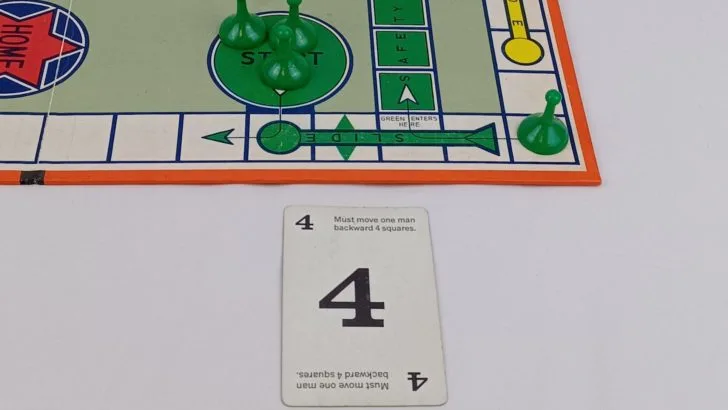
You may not move one of your pawns forward past the diamond space of your own color. You may move backwards past your own diamond space though. Players may also move past their own diamond space through the use of Sorry! and eleven cards.
You can pass other pawns on the board. You cannot land on the same space as another of your own pawns.
If you can move one of your pawns, you must move it even if it ends up hurting you.
If you don’t have any pawns currently out on the board (they are all on the Start or Home space), you will forfeit your turn.
Slides
When a pawn lands on the triangle space of a slide of a color other than its own, it will utilize the slide. The pawn will be moved to the round end of the slide. Any pawns on the slide are sent back to their corresponding Start space.
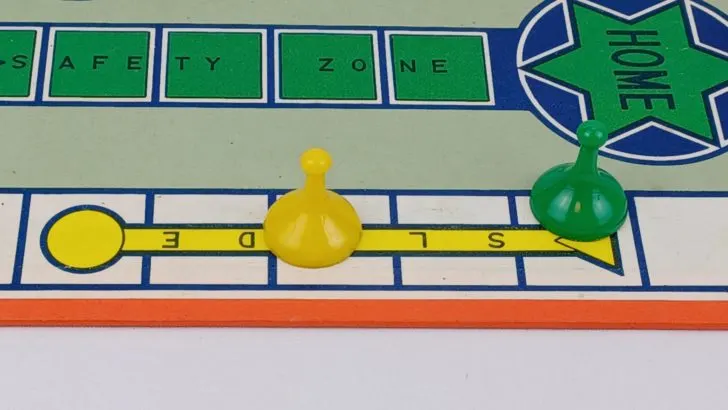
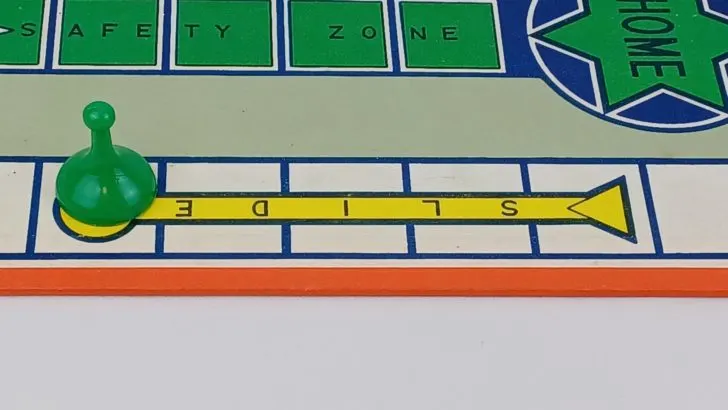
Sending Other Players Back to Start
Throughout the game you will have the opportunity to send other players’ pawns back to their Start space. There are three different ways to send back a player’s pawn.
If your pawn lands on a space occupied by another player’s pawn, you will send their pawn back to their Start space.
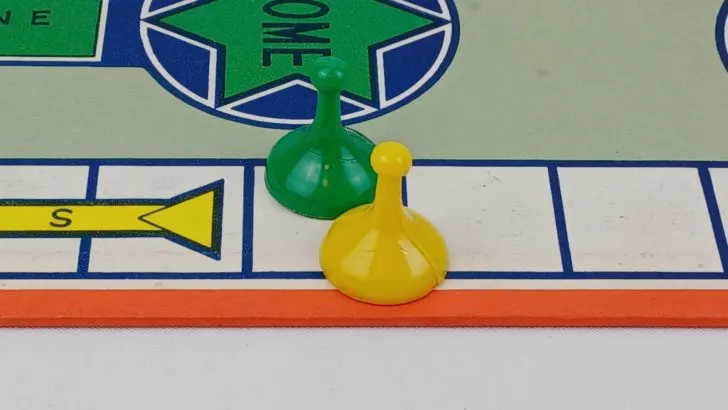
When a player draws a Sorry! card, they can choose another player’s pawn to send back to Start.
Finally a player’s pawn can be sent back to Start if a player moves through their space when using a slide.
Safety Zone
Once you move a pawn into the Safety Zone, it is safe from other players. You can only enter your own colored Safety Zone.
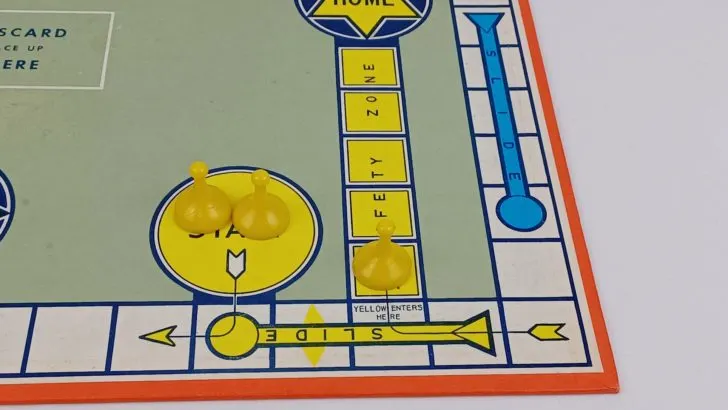
You may not enter the Safety Zone by moving backwards.
The only way a pawn that enters the Safety Zone becomes vulnerable is if it has to move out of the zone due to moving backwards.
Home
You can only enter the Home space by exact count. Once a pawn enters the Home space, it will remain there for the rest of the game.
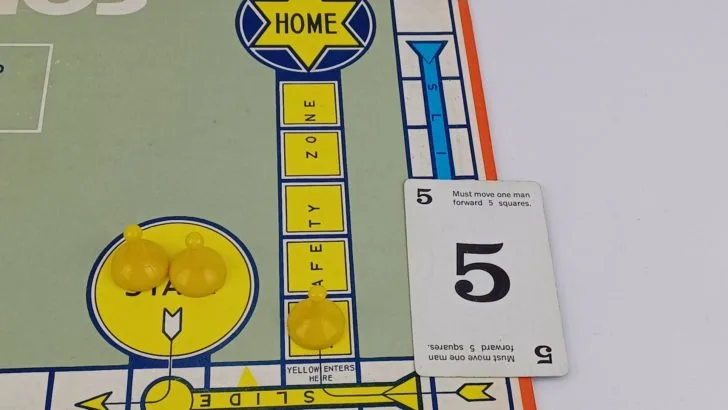
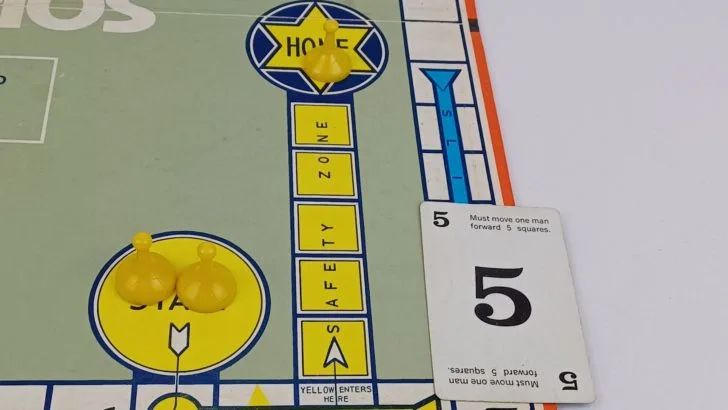
End of Turn
After you take the action on the card you drew, play passes to the next player clockwise/left.
The Cards of Sorry!
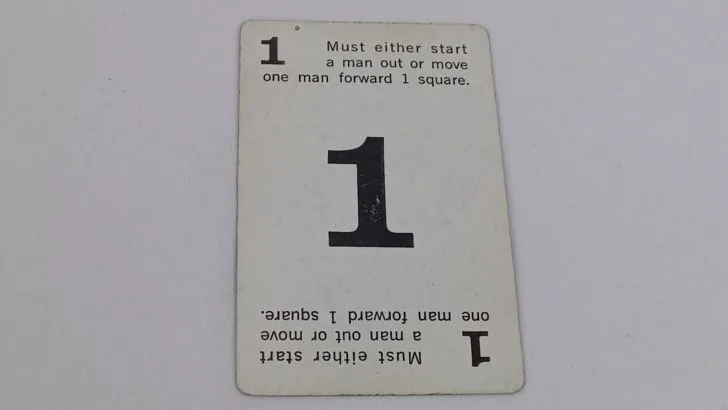
1s
Ones allow you to move one of your pawns from the Start space onto the entry space.
You may also use the card to move one of your pawns forward/clockwise one space.
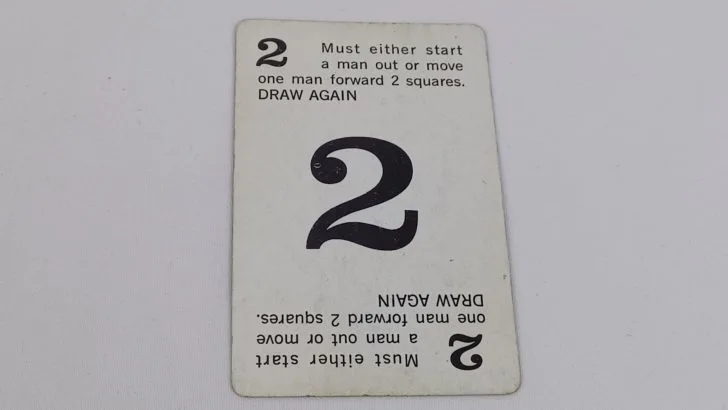
2s
When you play a two you can move one of your pawns from the Start space onto the entry space.
Otherwise you can use a two to move one of your pawns two spaces forward/clockwise around the board.
You also get to draw another card and take the corresponding action.
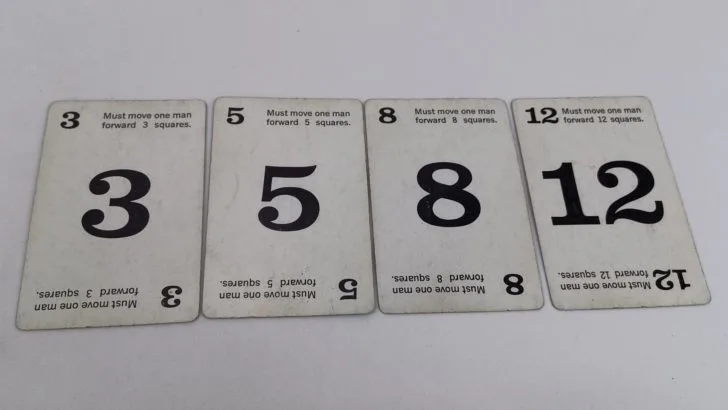
3s, 5s, 8s, 12s
You will move one of your pawns forward/clockwise the corresponding number of spaces around the board.
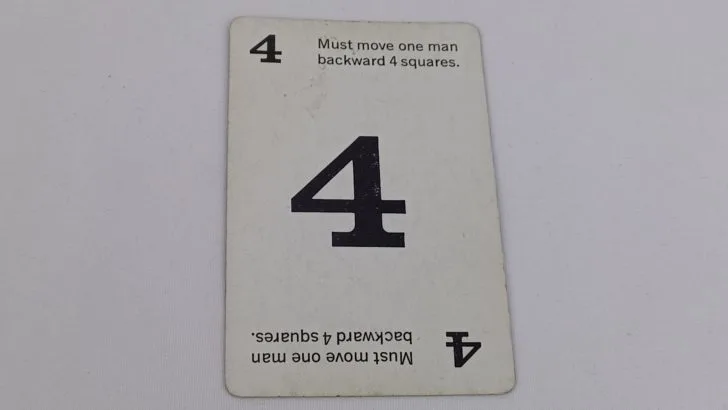
4s
When you play a four, you will move backwards/counter-clockwise four spaces.
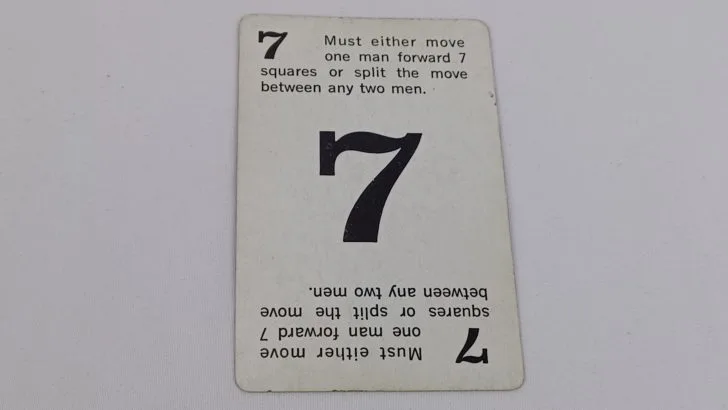
7s
Sevens can be played like any other normal number card. Instead of just using the number on one pawn though, you can choose to split the seven spaces between two different pawns.
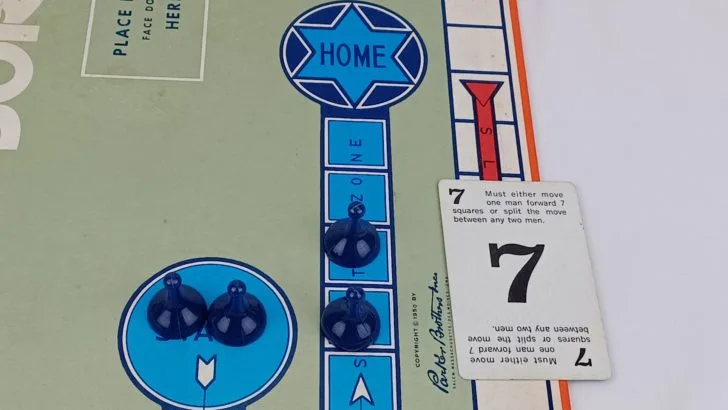
You cannot use the seven’s power to move a pawn onto the gameboard though.
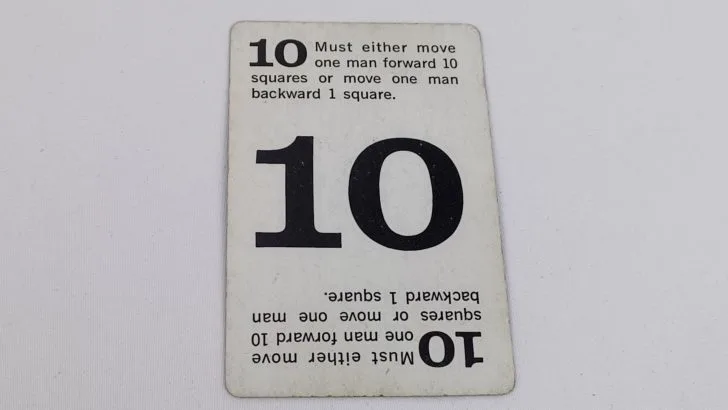
10s
You can play a 10 to move one of your pawns forward/clockwise ten spaces.
Otherwise you can use the card to move one of your pawns backwards/counterclockwise one space.
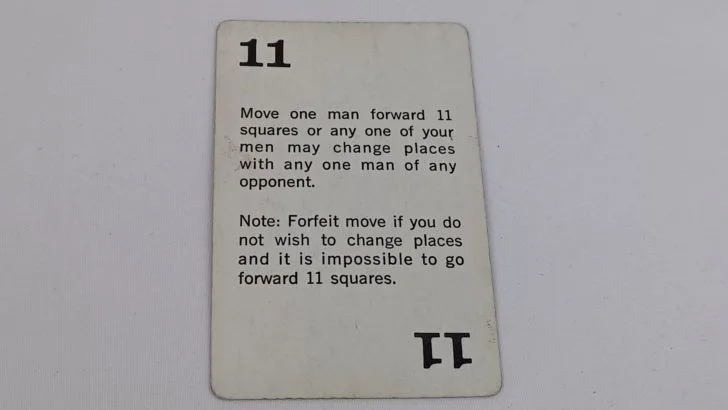
11s
Elevens can be played in two different ways.
First you can use the card to move one of your pawns forward/clockwise eleven spaces.
Otherwise you can choose to swap the position of one of your pawns for one of your opponent’s.
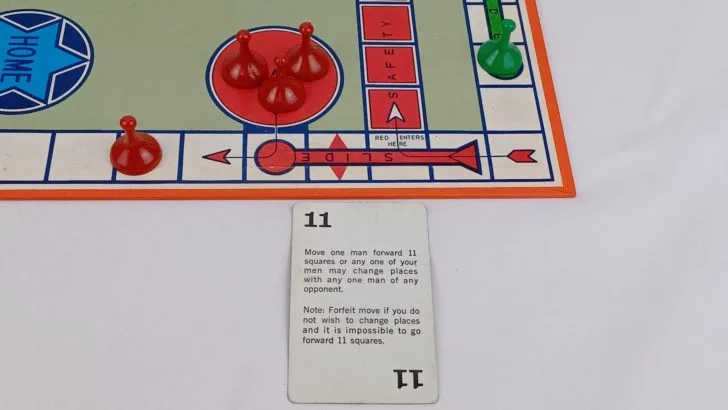
If you do not want to change places with another pawn and you can’t move the eleven spaces, you will forfeit your movement from the card.
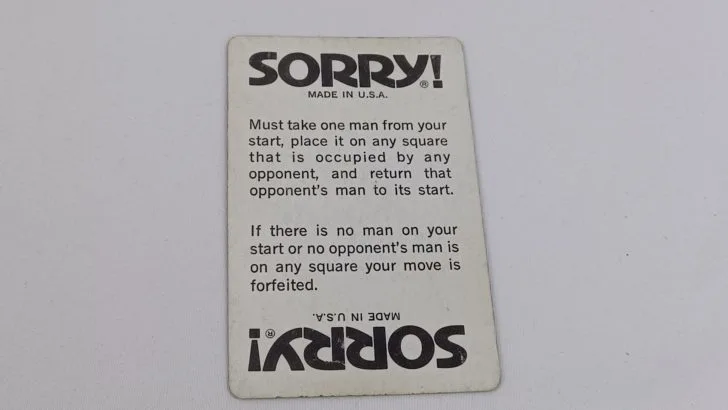
Sorry!
When you play a Sorry! card you will take one of the pawns from your Start space and place it on a space that has another player’s pawn on it. You will then send the pawn that used to be on that space to the corresponding player’s Start space.
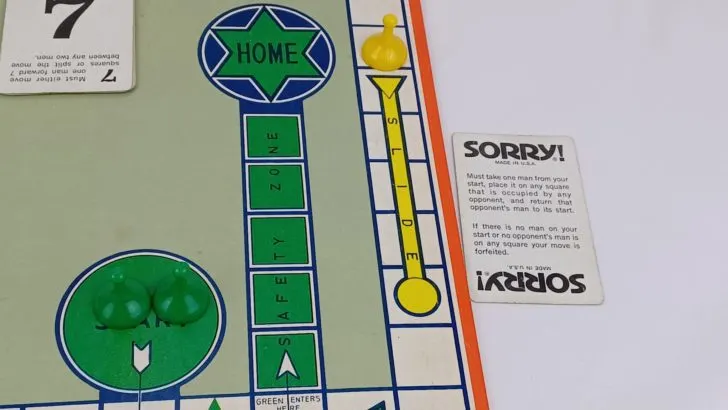
If you do not have a pawn on your Start space or there are no opponent pawns on a space you can occupy, you will forfeit the ability of the card.
Winning the Game
The first player to move all four of their pawns to their Home space wins the game.
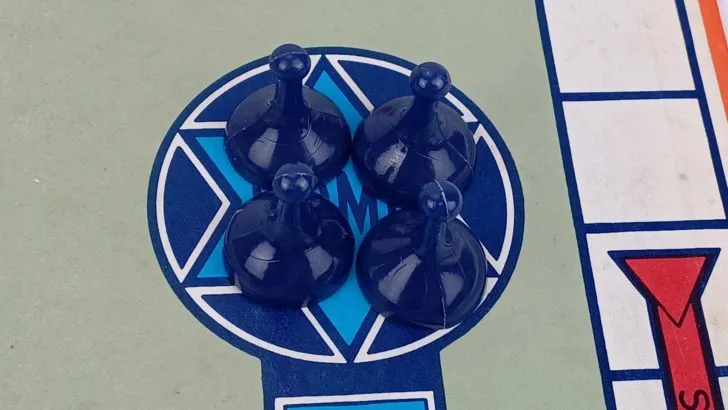
Partnership Game
If players would like to play in pairs, you can use the Partnership variant.
This variant is played mostly the same as the normal game except each player has a teammate. Red and yellow will be one team, and blue and green will be the other team.
The changes to the rules to support partner play are as follows:
When playing cards to enter pieces onto the gameboard, a player may choose one of their own pawns or one of their partner’s.
When you play a movement card, you can use it to move one of your pieces or one of your partners. You may split the movement of a seven card between one of your pieces and one of your partners. The second card you draw for a two card can be used on either player’s pawns.
A player must use a Sorry! card even if it forces them to send one of their partner’s pieces back to Start. If a player lands on a space that has one of their partner’s pawns on it, they will still send the pawn back to Start.
Once a player has moved all of their pawns to their Home space, they will still take their turn like normal. They will use their turn to try and move their partner’s pawns Home.
The first team to get all eight of their pawns Home first, wins the game.
Point Score Variant Game
Point Score Sorry! is a more advanced version of the game that you can choose to play.
Most of the rules are the same as the normal game. The only differences are detailed below.
At the beginning of the game you will place three of your pieces on your Start space. Your fourth piece is placed on your entry space.
After shuffling the cards, deal five cards to each player. Instead of drawing and playing one card each turn, you will have a hand of five cards. You will choose one of the five cards from your hand to play each turn. After moving your pawn, you will draw a new card. If you cannot play one of your cards (they would not provide a valid move), you must discard one of your cards and draw a new one.
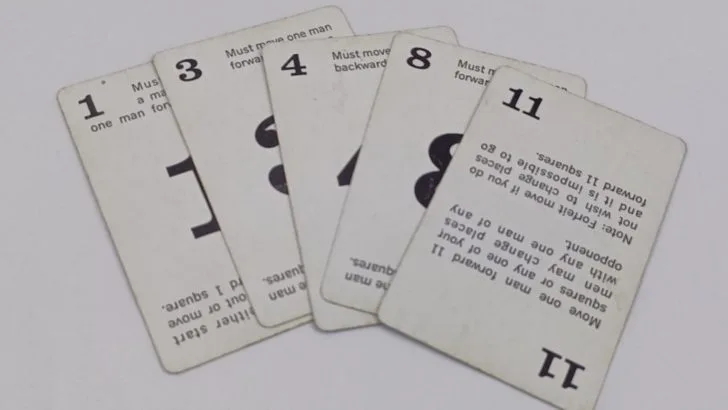
The first player to get all four of their pawns Home first wins the game. The winner will score points as follows:
- 5 points for each opponent piece not in Home
- 100 points if no opponent’s piece reached Home
- 50 points if no opponent has more than 1 piece Home
- 25 points if no opponent has more than 2 pieces Home
Sorry! FAQ
If you have any questions about how to play the game, leave a comment below on this post. I will try to answer any questions asked as best and as quickly as possible.
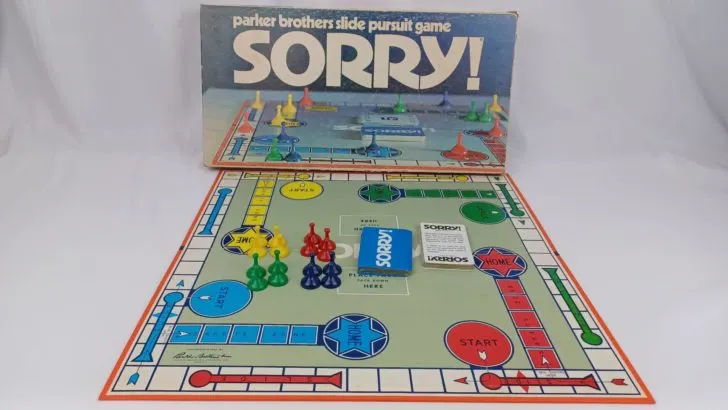
Components
- 45 cards
- 5 – 1 cards
- 4 – 2 cards
- 4 – 3 cards
- 4 – 4 cards
- 4 – 5 cards
- 4 – 7 cards
- 4 – 8 cards
- 4 – 10 cards
- 4 – 11 cards
- 4 – 12 cards
- 4 Sorry! cards
- 16 Pawns (4 of each color)
- Gameboard
- Instructions
Year: 1929 | Publisher: Hasbro, Parker Brothers, Waddingtons, Winning Moves | Designer: Paul T. Haskell Jr., William Henry Storey | Artist: NA
Genres: Family, Roll and Move, Take That
Ages: 6+ | Number of Players: 2-4 | Length of Game: 30 minutes
Difficulty: High | Strategy: High | Luck: High
Where to Purchase: Amazon, eBay Any purchases made through these links (including other products) help keep Geeky Hobbies running. Thank you for your support.
For more board and card game rules/how to plays, check out our complete alphabetical list of card and board game rules posts.

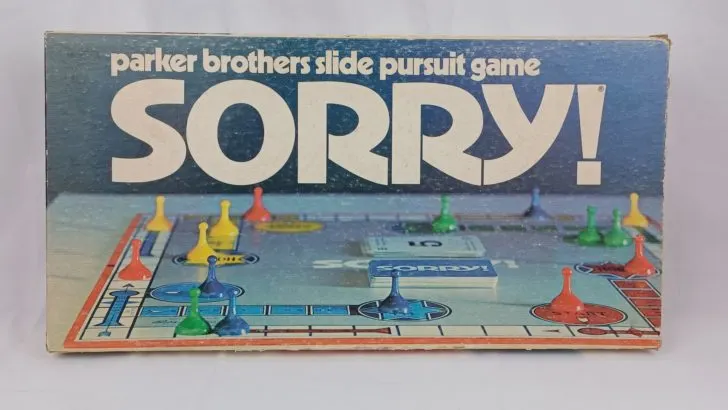
Don Henry
Monday 29th of May 2023
I landed two pawns in the safety zone, 1st pawn 2 spaces out of home, the 2nd, 3 spaces behind the 1st. I pull a 3. Do I have to move to knock the 1st pawn back to Start? Doesn't seem fair -- should just have to lose the turn. What do you think? Don
Eric Mortensen
Wednesday 31st of May 2023
I am pretty sure that you would just lose your turn. The official rules specifically mention that you can't move one of your pawns to a space already occupied by another of your pawns.
In this case if you don't have any other pawns that you could move the three spaces (other than the one that would land on your other pawn), you would just not use the three spaces. If you did have another pawn that you could move, you would have to move that pawn though.